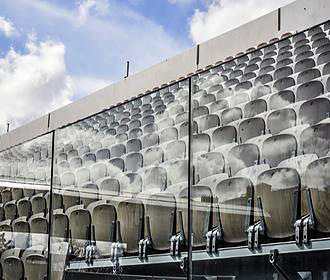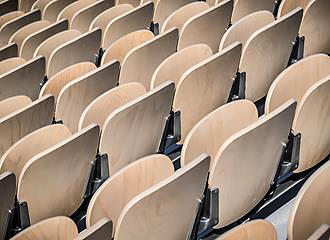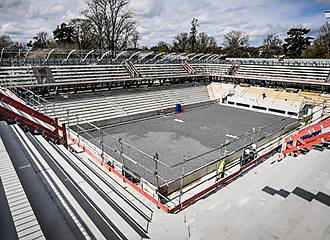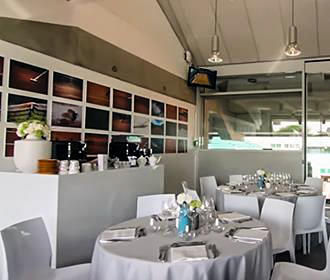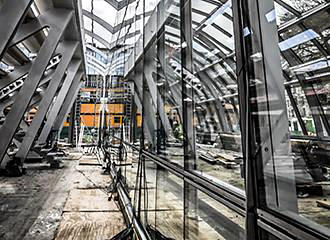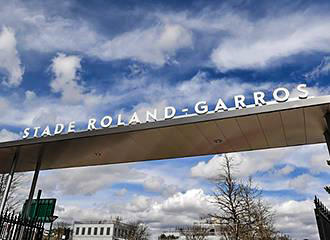History of the Stade Roland Garros Stadium
The Roland Garros stadium hosts one of the four major world tennis championships and has become famous for the greatest clay court championships, when the French Internationals became the first Grand Slam tournament to join the Open era, but why the name, and who are the legends?
The beginnings of the French tennis championships
The French singles championships were originally reserved for members of French tennis clubs and the first championship was held at the Stade Francais club in 1891, then the ladies singles were added six years later.
However, it was not until 1925 that the French tennis Federation decided to open up the even to the best international tennis players and hence the French Internationals were born and these were originally held at the Stade Francais one year and the Racing Club de France the next.
Yet the year 1927 became the major milestone for French tennis, which was the year that they celebrated one of the biggest shocks in 20th century sport when the foursome, Jacques Brugnon, Jean Borotra, Henri Cochet and Rene Lacoste, known as the French Musketeers, upset the odds when they won the Davis Cup on American soil.
And so, they set up a rematch for 1928, but this time it was to be held in Paris.
The start of the Stade Roland Garros stadium in Paris
Now as you can no doubt appreciate, with such a major sporting occasion going to take place in Paris, it required a stadium that would be worthy of holding such an event, and so the Stade Francais handed over three hectares of land to the French Tennis Federation to build a new stadium.
But why the name? Well, Roland Garros was actually an aviation pioneer, who on 23rd September 1913 was the first man to fly a plane over the Mediterranean plus he was a World War I hero after shooting down enemy aircraft, yet to many people it seems strange to have an aviators name for a tennis stadium.
However, Roland Garros was one of the most renowned former members of the Stade Francais prior to his death ten year earlier when he was killed in aerial combat in 1918, and the land near the Porte d’Auteuil was only offered to the French Tennis Federation on the condition that the stadium would be named after him.
The characteristic red clay court is in fact composed of more than just normal clay and at the time was a state of the art design implemented to allow proper drainage and when the stadium was first constructed, the main tennis court was just known as the Centre Court, however this was changed a few years later to the Court Philippe Chatrier.
The four main spectator grandstands are named after the four musketeers and can hold well over 14,000 people and once completed the first event to take place at the Stade Roland Garros stadium was the French Internationals prior to the four taking centre stage to compete in the rematch of the Davis Cup, which they successfully won.
These four, known as the musketeers held on to the cup until 1933 when they had to give up the famous silver salad bowl, but by then the French Internationals were well and truly established at the stadium, and there was as monument erected at the centre of a courtyard, which was called the Places des Mousquetaires. Also, as another tribute to Jacques Brugnon, Jean Borotra, Henri Cochet and Rene Lacoste, the trophy which is awarded each year at the French Open mens singles tennis championships is called the La Coupe des Mousquetaires.
Tennis itself became an even more popular sport and the Stade Roland Garros stadium went from strength to strength, however, all tennis tournaments were cancelled during World War II, and did not start again until 1946.
Stade Roland Garros stadium in Paris after World War II
The next significant turning point was when the French Internationals became the first Grand Slam tournament to join the Open era and professionalism brought more expansion and excitement to the sport and today the Grand Slam, or Majors, as it is also known, incorporates the Australian Open held in January, Wimbledon held from June to July, the US Open held in August and September, and of course the French Open held from May to June each year.
The 1970s and 1980s brought some breath-taking competitions with some of the greatest names in tennis playing at the Stade Roland Garros stadium, namely Bjorn Borg who won the title of the French Open championships six times.
Also in 1988, the president of the Federation Francaise de Tennis, or FFT for short managed to restore tennis as one of the sports in the summer Olympics and being a former tennis player, plus coach to the French team in 2001, the Centre Court got renamed to Court Philippe Chatrier after him.
But there have also been the great womens singles championships such as the unstoppable Monica Seles, Martina Navratilova and Steffi Graf, yet since the four musketeers and after World War II there have only been a few French tennis players who have won the French Open tournament, with the latest being by Yannick Noah in 1983.
Come 1994 there was even more expansion at the Stade Roland Garros with the addition of the Court A that could accommodate over 10,000 spectators, but in 1997 this was renamed the Suzanne Lenglen court after the greatest female French tennis player who won the ladies Open six times, the doubles twice and the mixed doubles an incredible seven times.
In 2003, the first ever multimedia tennis museum in the world was also opened up at the Stade Roland Garros, which is known by different names including the Tenniseum, the Musee du Tennis, the Musee Roland Garros and the Musee de la Federation Francaise de Tennis. And here you could also arrange a guided tour backstage to discover the area dedicated to the players, find out about the history of the stadium, tennis and even prior to the original game of Jeu de Paume, but due to further renovation and expansion works you can read about later, the museum closed in 2016, but a new museum is planned for the future.
But even more recently, it seems that the Spanish are the current clay court specialists on this premier world class clay court, with the left-handed player Rafael Nadal breaking the record of Bjorn Borg by winning the French Open eleven times. Yet Rafael Nadal is also the most recent tennis player to win the Grand Slam tournament majors on all four of the very different courts.
More updates, renovations and expansions have taken place at Roland Garros with a new 5,000 seat tennis court named Simonne Mathieu after the female tennis player who won the 1938 and 1939 women's singles, yet was also a leader of the French resistance during World War II, which was finally opened in March 2019 on the grounds by the Jardin des Serres d'Auteuil.
2019 also saw the 40th Anniversary of the official poster for the Roland Garros tournament, which has become a tradition where the FFT commissions a work of art by an artist specifically for the tournament, and it was also in the August of this year that Vladimir Velickovic passed away, who was the artist chosen for the 1983 official Roland Garros poster.
The problems that have occurred over many years with rain stopping play, or lack of light due to a match going on well into the evening, have caused many issues, and just like Wimbledon having a retractable roof, the same thing was decided for Roland Garros.
For the main centre court, Philippe-Chatrier Court, work was started in 2017 with the manufacture of 11 trusses with each one weighing in at 330 metric tons and split into 7 sections that are 15m in length and 3 metres in height. When these sections are assembled into 2 units the sections make up 1 truss spanning 105 metres!
From this stage of manufacture in workshops near Venice, Italy, just after the 2019 French Open an assembly plant at the Roland Garros stadium was set up with 8 months of work ahead to assemble all 11 trusses, fit the canvases and install the acoustics, not forgetting all the electronics with its cogs mechanisms and motors, etc that operate the opening and closing of the roof.
Finally, the project of the Roland Garros roof over Philippe Chatrier Court was completed on 5th February 2020 in readiness of the next French Open tennis tournament, which also saw a decision made to level the playing field by hosting all quarter-final matches as well as semi's and finals on the Philippe-Chatrier Court.
Yet the start of 2020 has been a terrible year for sport all over the world, with the Coronavirus affecting people in China, America, Italy, France, UK, etc and many deaths of individuals along the way, which has seen venues close, curfews put in place, events cancelled and sports contests and tournaments either postponed or completely cancelled. So, in light of this, the FFT and Roland Garros decided to postpone the 2020 French Open until 20th September through to October.
